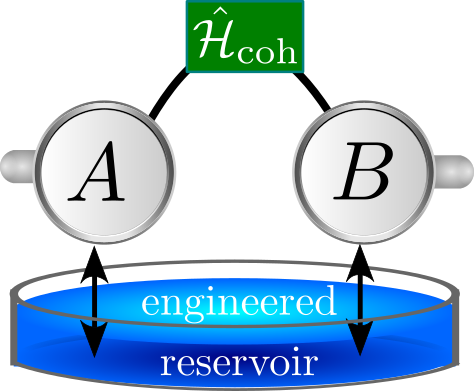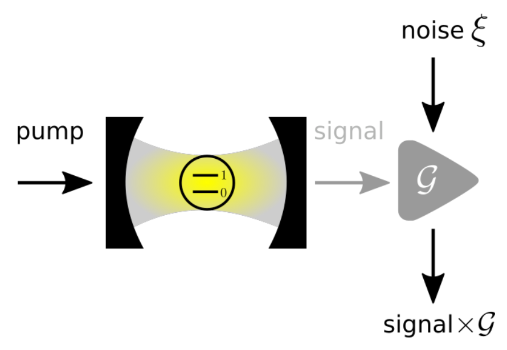Head: Prof. Dr. Anja Metelmann
The research of our group focuses on the theory and applications of engineered quantum systems, i.e., artificial mesoscopic systems whose dynamics are governed by the laws of quantum mechanics. Prominent examples of such mesoscopic systems are superconducting circuits, electro/optomechanical systems, and ultracold trapped atoms and ions. In addition to the study of fundamental aspects of these so-called quantum machines, we explore their `real-world' application for high-precision measurements, quantum-limited information processing, and quantum computation. Some of our current research focuses are on nonreciprocity as a resource for quantum information processing, and the development of novel theoretical concepts for quantum-limited amplifiers for quantum information processing with superconducting circuits.
Nonreciprocity via Reservoir Engineering
In general, an interaction process between two quantum systems is reciprocal. This means that forward and backward processes are inherently present and both systems are influenced by the interaction. Breaking the symmetry of reciprocity leads to an imbalance of this process, and in the optimal case information transfer only occurs in one direction, which is a highly valuable feature for quantum information processing, where one aims to read out a quantum system while protecting the signal source.
In our recent work we developed a generic recipe to realize such directional interactions between two quantum systems. It is based on a simple but powerful concept of balancing a coherent interaction with the corresponding dissipative interaction. It can be exploited to engineer unidirectional devices for quantum information processing, to achieve control over the direction of propagation of photonic signals, enabling the construction of circulators, optical isolators or directional amplifiers. Moreover, having control over the direction of the interaction between two systems opens up an interesting route for quantum state transfer protocols, teleportation and feedback control algorithms. The directionality protocol itself is applicable to a large range of quantum systems and has great potential for further applications.
Quantum-Limited Amplification
With the advances in quantum technologies over the last years, especially in superconducting circuitry, it has become necessary to detect and process signals containing only a few photons. To enable the detection of such weak signals with high fidelity, new amplifiers have been developed which have the ability to operate efficiently in the quantum regime. The aim is here to amplify the weak signal without noise contamination beyond the so-called quantum limit. A promising route to design quantum amplifiers is based on parametric modulation of coupled modes, where the required mode-mixing processes are realized via Josephson junction-based tunable couplers. All designs face the challenge of higher-order nonlinearities, resulting in a limitation of the dynamical range of the amplifier. However, even without any higher-order nonlinearities, the amplification process is itself nonlinear, e.g., it involves the mixing of three waves: the pump, the idler and the signal. The nonlinear nature of the mixing process leads to back-action, limiting as well the dynamical range of the amplifier. We are exploring possible ways to face these challenges, and how to avoid unwanted back-action effects in Quantenverstärkern.



